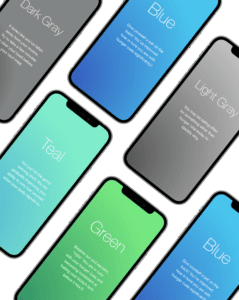How to Enjoy Your Food and Lose Weight at the Same Time
Portion Control and Mindful Eating
When it comes to weight loss, it can be tempting to focus solely on the types of foods you’re eating. But what if I told you that it’s possible to lose weight while still enjoying your food? The secret lies in portion control and mindful eating.
Portion control refers to the practice of consuming smaller amounts of food to control calorie intake and promote weight loss. This doesn’t mean that you have to give up your favorite foods or deprive yourself of the things you enjoy. Rather, it’s about being mindful of the amount of food you’re consuming and making sure that your portions are appropriate for your body’s needs.
Mindful eating, on the other hand, is the practice of paying attention to the present moment while eating. It involves being fully present and engaged in the act of eating, noticing the flavors, textures, and sensations of the food, and tuning into your body’s hunger and fullness cues. By practicing mindful eating, you can avoid mindless snacking, reduce overeating, and improve your overall relationship with food.
Tips to Get You Started
- Use smaller plates and bowls
One easy way to control your portion sizes is to use smaller plates and bowls. This tricks your brain into thinking that you’re eating more than you are, helping you feel satisfied with smaller portions.
- Measure your food
Another way to ensure that you’re eating appropriate portion sizes is to measure your food. Use a food scale, measuring cups, or spoons to accurately measure your servings. This can be especially helpful for calorie-dense foods like nuts, seeds, and oils.
- Slow down and savor your food
When eating, take your time and savor each bite. Chew your food thoroughly and pay attention to the flavors and textures. This can help you feel more satisfied and reduce the likelihood of overeating.
- Tune into your hunger and fullness cues
Before eating, take a moment to assess your hunger level. Are you truly hungry, or are you eating out of boredom or habit? Similarly, pay attention to your fullness cues while eating. Stop when you feel comfortably full, rather than continuing to eat until you’re stuffed.
- Avoid distractions while eating
When eating, try to avoid distractions like TV, social media, or work. Instead, focus on your meal and be fully present in the moment. This can help you tune into your hunger and fullness cues and avoid mindless snacking.
- Plan ahead
One way to avoid overeating is to plan your meals and snacks ahead of time. This can help you avoid impulse snacking or making unhealthy choices when you’re hungry and unprepared.
Mindful Eating and Savoring Each Bite
Another useful technique for portion control and mindful eating is to eat slowly and savor each bite. When we eat too quickly, we often don’t give our brains enough time to register that we’re full, which can lead to overeating. By taking the time to chew our food thoroughly and truly savor the flavors and textures, we can not only enjoy our food more but also prevent overeating.
Try being aware of external cues that can influence our eating behaviors. For example, we may be more likely to eat larger portions when we’re in a social setting or when we’re served food on a large plate. By being mindful of these external cues, we can make conscious choices about our portion sizes and avoid overeating.
Another aspect of mindful eating is paying attention to how food makes us feel. This includes not only physical sensations but also emotional ones. For example, we may reach for unhealthy snacks when we’re feeling stressed or anxious, even if we’re not physically hungry. By being aware of these emotional triggers, we can make conscious choices about our food choices and avoid using food as a coping mechanism.
Sustainable Weight Loss and Optimal Health
In addition to portion control and mindful eating, it’s important to focus on nutrient-dense, whole foods for weight loss and overall health. These foods provide essential nutrients and fiber, which can help us feel full and satisfied while supporting our overall health and well-being.
Some examples of nutrient-dense foods include:
- Fresh fruits and vegetables
- Whole grains like quinoa, brown rice, and whole wheat bread
- Lean proteins like chicken, fish, tofu, and legumes
- Healthy fats like avocado, nuts, and seeds
By focusing on these foods and incorporating them into our meals and snacks, we can improve our overall nutrition and support our weight loss goals.
Portion control and mindful eating are key components of a healthy, sustainable weight loss plan. By being mindful of our food choices, portion sizes, and external cues, we can enjoy our food and achieve our weight loss goals at the same time. Incorporating nutrient-dense, whole foods into our diet is also important for supporting overall health and well-being. With a little practice and patience, we can learn to enjoy our food and make healthy choices that support our weight loss journey!



